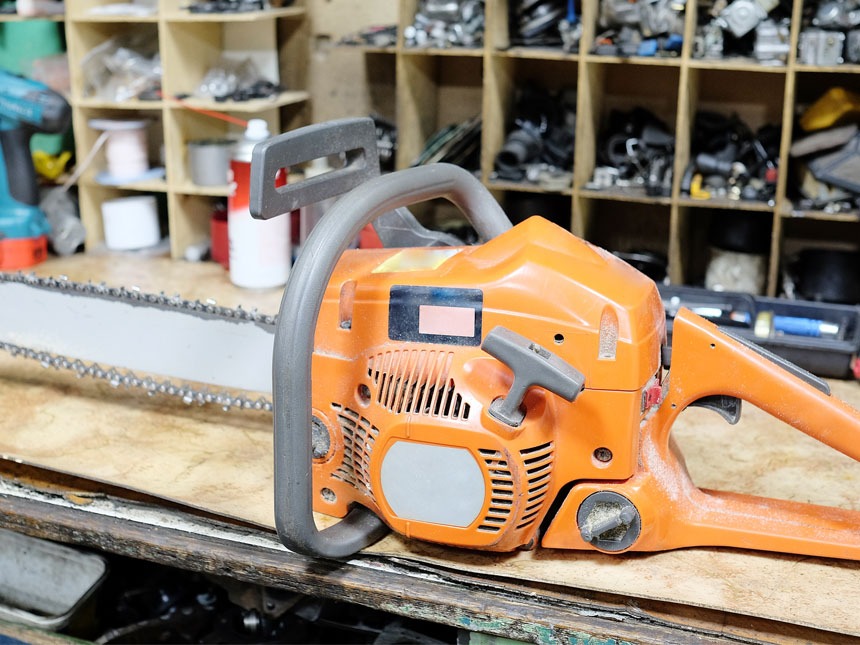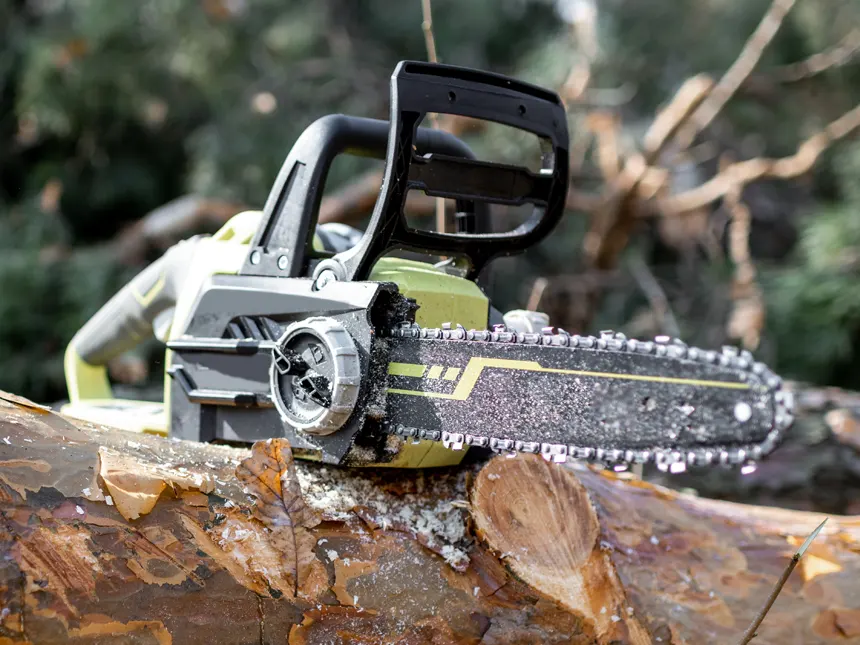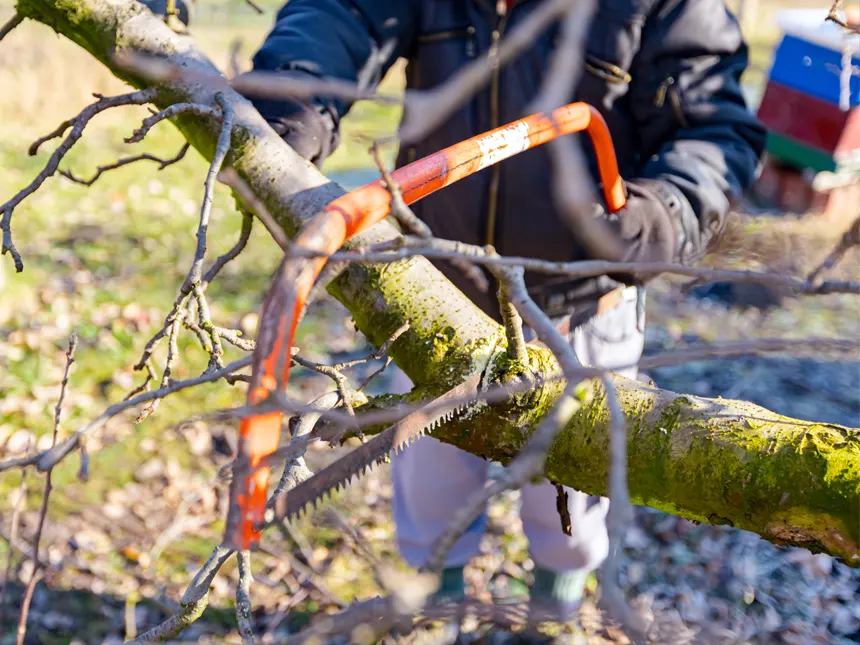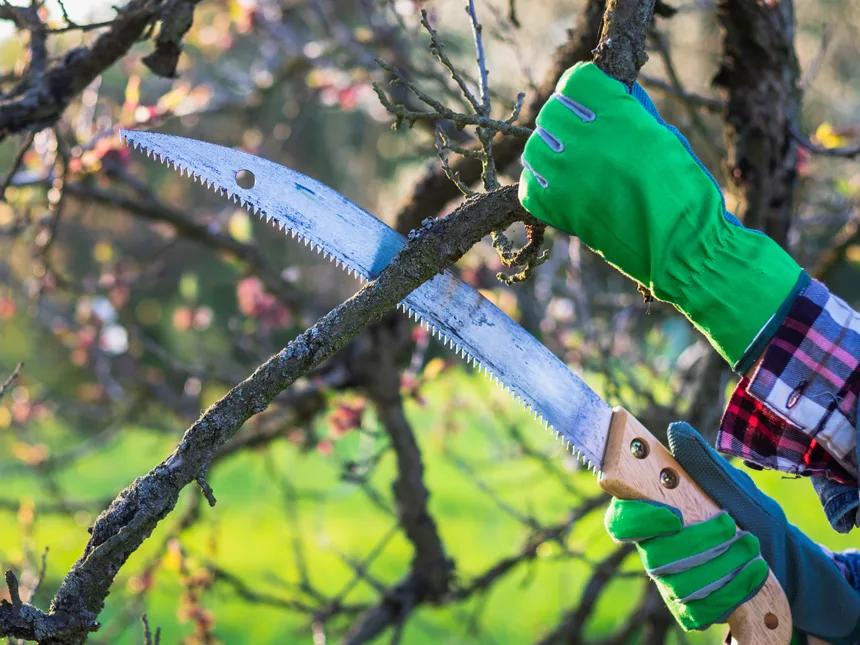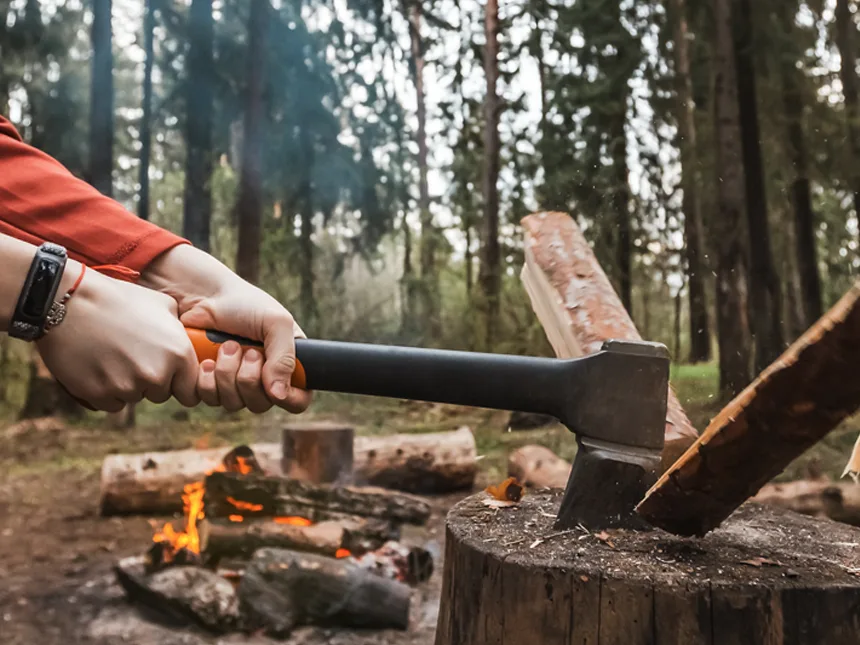Pine Firewood: Is It Any Good?
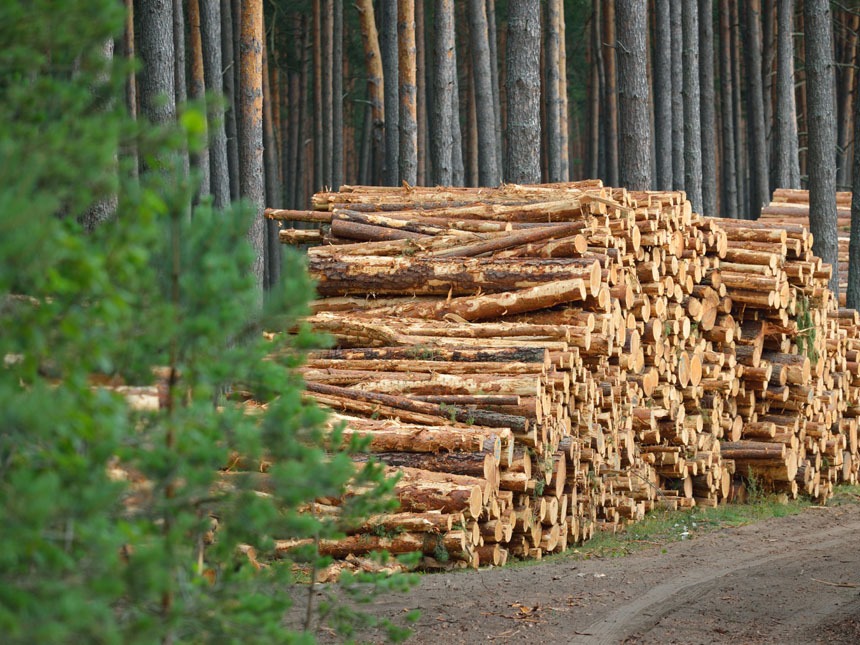
Timber Gadgets is reader-supported. We may earn a commission if you buy through the links on our site.
Pine is poor firewood. Some even call it terrible. It finds its preferred use in the construction and furniture industry. Anywhere but burning in your stove.
It is an evergreen tree. Evergreen trees do not shed their leaves. Leaves (or pine needles) may get dry and drop off over the years. Its leaves are narrow needle-like and called the same.
Pine is softwood that contains an incredible amount of sap. It grows well in acidic and well-drained soils. It bears cones, male and female on the same tree. The male cone is slender while the female cone is woody and thick. Female cones contain seeds. These cones are used in crafts work, you might have seen a few around you.
It has low but robust heat production and produces a moderate to high amount of smoke. Due to these characters, it is suitable for outdoor fires only, in my opinion. It’s not all bad; pinewood catches fire easily and has a decent smell. This makes it a good choice for kindling.
Table of Contents
Is Pine a Good Firewood?
Pine is good firewood for outdoor and camping purposes. No firewood is useless; however, it may suit specific circumstances. Pine burns fast producing high heat. Such wood is not suitable for indoor uses. You may end up refilling your stove multiple times.
It is sappy and contains a high amount of resins. So, it smokes more than other firewood. For these reasons, it should not be used indoors. It puts off an average amount of sparks.
Pine does, however, produce a good fragrance. Because it is softwood and contains resins it ignites easily. Due to this property, it can be used as a starter for other hardwoods. It is always a good idea to burn a mix of soft and hardwood, especially while starting the fire.
Burn Qualities of Pine Firewood
- BTU: 15.9 to 21.1 million per cord
- Weight: 2250 to 2610 lb (dry cord)
- Resin / Sap Content: High
- Seasoning Time: 6-8 months
- Smoke: Average to heavy
- Splitting Difficulty: Easy
- Smell: Pleasant
Heat Output
Common varieties of pine produce 15.9 to 21.1 million BTUs of heat. British thermal unit is an index to measure the heat produced from any source. It is the same unit used to measure the heating or cooling capacity of devices like air conditioners.
Different species have different heat outputs. White pine burns relatively less hot with 15.9 million BTUs, while yellow pine produces the highest heat at 21.1 million BTUs.
It is important to note that the maximum heat output can be achieved only if firewood has a moisture content of less than 20 percent. Otherwise, if firewood is burnt wet, most of its heat is wasted in vaporizing the moisture. This results in low heat output and a higher number of unburned particles in the smoke.
Smoke
Pine produces a high amount of smoke. Due to its high smoke, it is considered unfit for indoor use as single burning firewood. Smoke can be both toxic and hazardous when you burn it in your house. Wet firewood always creates more smoke compared to dry firewood. It’s always recommended to burn dry and seasoned firewood. Higher smoke also leads to problems like creosote accumulation in a chimney.
Creosote
When wood is burnt, some of the unburnt particles leave with the smoke. These particles stick to the walls of the chimney while passing through it. This forms layers and over time, multiple layers are deposited over each other. It is called creosote and is highly flammable.
If creosote adds up too much, it can ignite and cause chimney fires. In the worst case, it can also cause a house fire. All types of firewood produce creosote, seasoned firewood produces the least quantity of it.
So, it is advised to burn seasoned firewood with low moisture content. Similarly, it is also important to clean the chimney before the winter season arrives.
Pine creates a lot of creosote. While the dry wood burns fast with the speedy release of smoke. It is usually less often for unburned particles to attach to the chimney walls. But pine being a heavy smoker and releasing a large number of unburnt particles still adds a lot to the creosote. For this reason, most people avoid burning it indoors.
Spark
Firewoods produce varying amounts of sparks. Spark production depends upon various factors. The most important of them can be moisture content along with the presence of sap and resins.
Sparks can create a great problem especially indoors. A spark falling upon your rug can lead to a house fire in the worst-case scenario. So, it is always advised to put a glass screen in front of your stove. Even though some firewoods can spark such high that they can damage glass screens.
That being said, sparks can cause problems outside as well. It goes without saying but, always maintain your fireplace!
Pine does not produce a lot of sparks. However, it is advised not to burn unseasoned firewood which can produce more sparks. Still, you should keep an eye while burning open fire. This is for all types of firewoods.
Smell
Pine produces a distinct smell. It is preferred by many for its aroma. However, it should not be used to smoke food to high smoke. It is a general rule not to use softwood for smoking food.
Cedar is used as planks that don’t burn directly. It is for its great smell that it is the preferred firewood for outdoor campfires. It is a luxury to sit around fragrant firewood with high heat output. You may find many air fresheners with a label of pine on them!
Coals
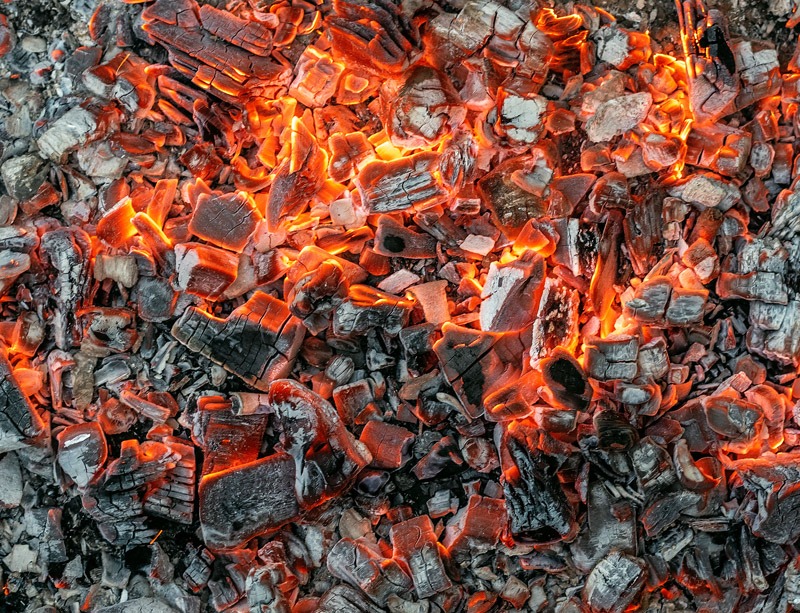
As we have discussed, softwoods burn fast and their coals don’t last long. Due to this property, softwoods, including pine, do not produce great coals. This property also limits its use for cooking purposes as it does not produce a consistent bed of coals.
However, for outdoor camping, such firewood is wonderful because it burns out fast.
Sap
Pine has a lot of sap and resins. While working with it you will get your gloves, clothes, and chain saw filled. It’s advised to use old clothes you’re not attached to. High sap content is the reason for smoke and creosote build-up. Pine has one of the highest sap content among all types of wood.
Splitting
Season pine is very easy to split. If you are lucky to find a pine with only a few knots, go for it. Anyways, cutting and splitting with an axe or machine, know that the high sap content will cause a mess. For small pieces, you may be able to use a splitting hatchet.
Splitting is always advised to downsize bigger pieces of firewood. It also speeds up the seasoning process as moisture loss is slow through bark alone. Splitting exposes a lot of areas for moisture loss. You should split the firewood to a size that easily fits your stove and burns well.
Related: Best Axe for Splitting Firewood
Comparing Pine Firewood to Others
Pine is softwood with low to average heat output. It can be split easily and loses moisture quickly. Naturally, it requires less time for seasoning. It has a good aroma and is preferably burnt for its smell. The downside is, that it produces a high amount of smoke and creosote. Moreover, it contains a high sap content.
However, it is preferable firewood for open campfires. It burns fast and coals are also extinguished in a short amount of time. It is perfect for kindling purposes and acts as a fire starter for hardwood.
Here we have compared pine with other firewood
| Species | Weight (lbs./Cord) Dry | Heat per Cord (Million BTUs) |
|---|---|---|
| Osage-orange | 4728 | 32.9 |
| Oak, White | 4200 | 29.1 |
| Elm, American | 2872 | 20.0 |
| Sweetgum | 2592 | 21.3 |
| Pine, Lodgepole | 2610 | 21.1 |
| Pine, Ponderosa | 2336 | 16.2 |
| Pine, White | 2250 | 15.9 |
| Fir, White | 2104 | 14.6 |
| Redcedar, Eastern | 2060 | 13.0 |
How Long to Season Pine Firewood?
Pine loses moisture quickly and needs less time for seasoning. Seasoning firewood is lowering the moisture level of the wood below 20 percent.
Sometimes, one full summer is sufficient to get the wood dry enough. It is recommended to split the wood before seasoning because it speeds up moisture loss. It is advisable to season the firewood for one full year to achieve ideal quality. Having said that, Pine is softwood and may not need a full year.
Identifying Pine Trees
Pine is an evergreen tree and belongs to conifers. These are found abundantly in the Northern hemisphere. There are as many as 126 species of pine overall in the world. These have high sap content and contain resins.
Pine can sometimes be mixed with or mistaken as Fir, or spruces. These trees grow tall and straight. Pine produces decent quality lumber which is widely used in the construction industry. It is also widely used in furniture, doors, and windows, etc.
36 species are native to North America.
Appearance
Pine trees can easily be identified from their needle-like leaves and beautiful cones. It produces two types of cones. Male cones are smaller and slender while female cones containing seeds are more woody and large. It is very beautiful and finds its use in craftwork.
Leaves
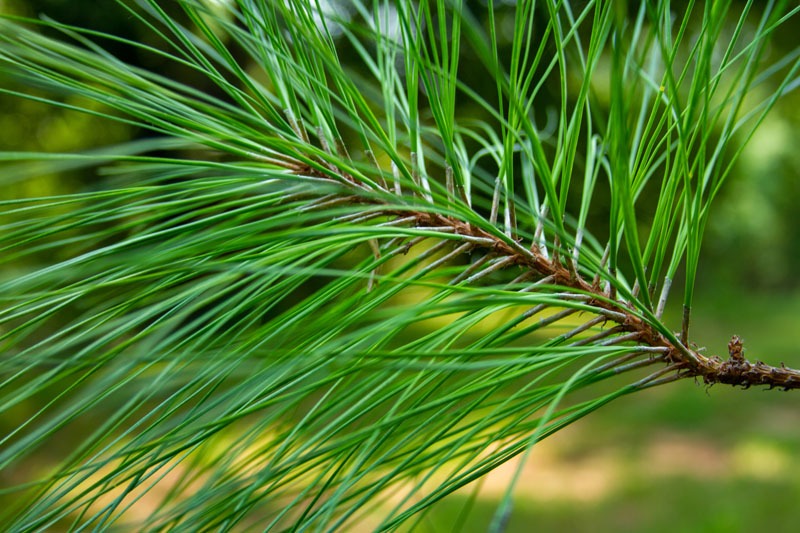
Pine tree produces long narrow leaves called needles. Needles grow in the bundle of two to five. This bundle is called a fascicle.
- The longest needles are produced on longleaf pine which measures 18 inches (45 cm)
- Foxtail pine produces the shortest needles which can be as small as one inch (2.5 cm)
Needles are used to differentiating between Pine and Fir. Pine needles are produced as a cluster on twigs. With Fir, these are softer and directly attached to the branch. When conifers like pine and spruce shed their leaves, they create a layer of needles called duff.
Bark
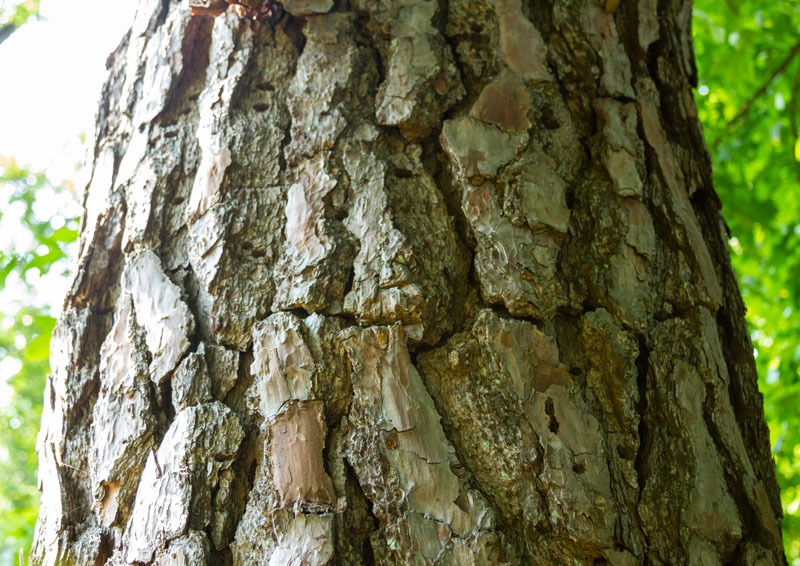
Bark has a reddish-brown or gray color and is scale-like. It has a rectangular or square-like pattern.
Types of Pine
As mentioned earlier, there are many species of pine. Listed below are a few of the more popular ones.
Eastern White Pine (Pinus stroubus)
Eastern White Pine is one of the fastest-growing trees and produces the tallest pine. They are the most important species in North America. It grows to the height of 230 ft and bears long slender cones up to 6 inches long. These have clusters of needles which contain five needles per cluster. Needles are bluish-green and they appear in small clusters.
In mature trees, the bark is grayish rough. These are popular types of Christmas trees. It can also be grown in containers. It produces a citrus-like smell.
Ponderosa Pine (Pinus ponderosa)
For its long and straight trunk, this is species has great importance in the timber industry. It is also called Western Yellow Pine, Bull Pine, or Blackjack Pine. Its needles can be around 8 inches long and they grow in bundles with each bundle having three needles on the shoot.
It has Orange-red bark with black margins. This tree produces long slender needles. Cones can size between 2 to 4 inches and can be dark purple to red-brown.
This pine can reach a height of 235 feet.
Lodgepole Pine (Pinus contorta)
Its stature varies with the variety. While some grow as tall slender trees some others produce short evergreen shrubs. These usually grow at high altitudes in cold mountains or coastal areas. These develop a conical shape which is their identifying feature. Branches grow outwards and upwards while near the top, they get shorter. Its needles are dark green and glossy. These are produced in pairs, while there may be a cluster of five needles in some varieties. In winter, its needles turn into bright yellowish-green.
Cones measure 1 to 3 inches and light brown. Lodgepole pine attains a height between 130 to 160 ft.
Conclusion
Pine is softwood that is more suited for burning outdoors rather than indoors. It makes decent kindling. Although it smells good, it is not used for smoking meats and the excessive amount of sap makes it difficult to deal with.
If you are not running out of hardwood like oak or hickory, save pine for outdoors and kindling only!

